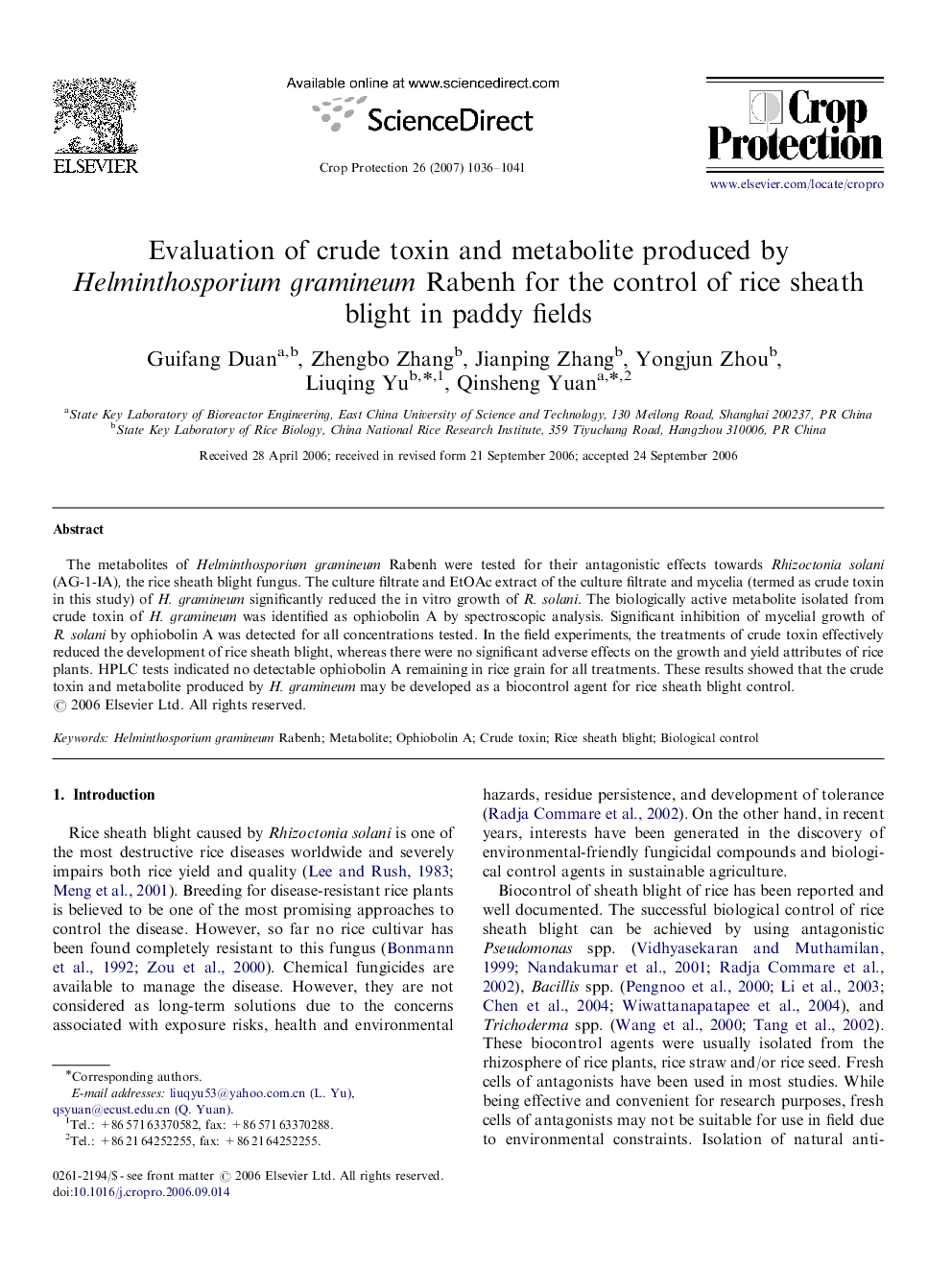| Article ID | Journal | Published Year | Pages | File Type |
|---|---|---|---|---|
| 4507853 | Crop Protection | 2007 | 6 Pages |
The metabolites of Helminthosporium gramineum Rabenh were tested for their antagonistic effects towards Rhizoctonia solani (AG-1-IA), the rice sheath blight fungus. The culture filtrate and EtOAc extract of the culture filtrate and mycelia (termed as crude toxin in this study) of H. gramineum significantly reduced the in vitro growth of R. solani. The biologically active metabolite isolated from crude toxin of H. gramineum was identified as ophiobolin A by spectroscopic analysis. Significant inhibition of mycelial growth of R. solani by ophiobolin A was detected for all concentrations tested. In the field experiments, the treatments of crude toxin effectively reduced the development of rice sheath blight, whereas there were no significant adverse effects on the growth and yield attributes of rice plants. HPLC tests indicated no detectable ophiobolin A remaining in rice grain for all treatments. These results showed that the crude toxin and metabolite produced by H. gramineum may be developed as a biocontrol agent for rice sheath blight control.
